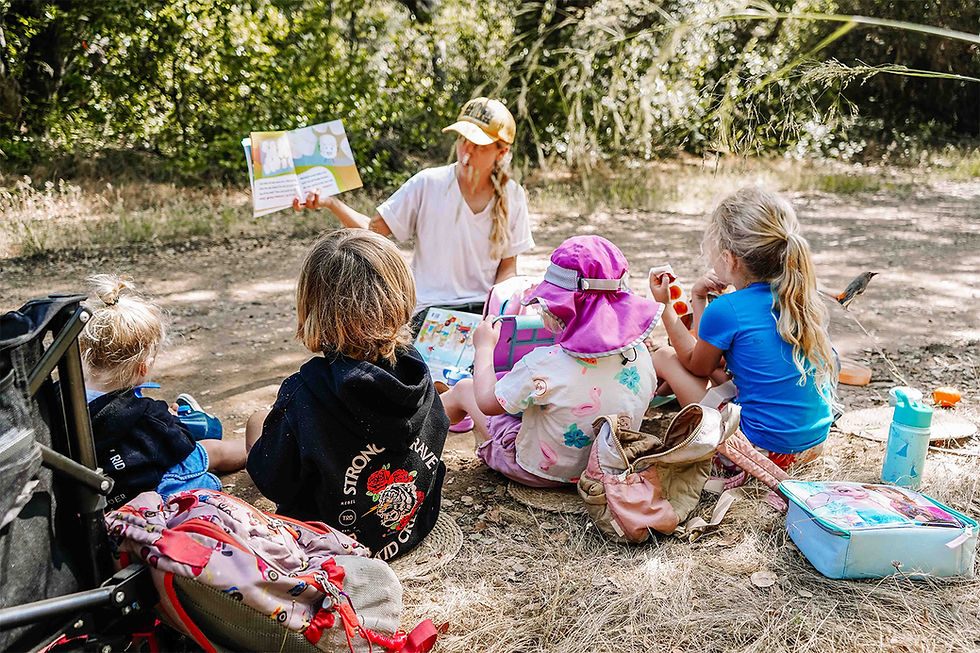Why Fine Motor Skills Thrive in a Forest School Environment
- Wild Wander Forest School

- Jul 13
- 1 min read
Updated: Jul 14
Have you ever noticed how much children learn with their hands? Developing strong fine motor skills is essential for everything from writing and art to dressing themselves and confidently exploring the world around them.

Nature’s natural workshop
In beautiful North County San Diego spots like Oak Riparian Park in Oceanside and San Elijo Lagoon in Cardiff, nature becomes the ultimate workshop for developing fine motor skills. Instead of worksheets, children sort tiny shells, weave grasses, and peel bark, building dexterity and hand strength in joyful, meaningful ways. Research in the Journal of Occupational Therapy supports that hands-on, outdoor activities improve fine motor development far more effectively than repetitive indoor tasks.
Real tools and real purpose
Children at Wild Wander might use safe tools to whittle sticks, create nature art, or thread beads made from seeds. These activities strengthen finger muscles and coordination essential for writing and self-care skills (Bart et al., 2011). They gain confidence and independence, feeling capable and proud of their creations.
Motivation through curiosity
Curiosity drives everything. A child fascinated by patterns on leaves may spend an hour creating intricate natural collages, developing focus and fine motor precision. A study in Frontiers in Psychology found that child-led activities in nature promote longer engagement and deeper concentration.
Fine motor skills that prepare for life
These experiences set children up for success in TK, kindergarten, and homeschool environments. With strong fine motor foundations, they enter new learning spaces ready to write, create, and care for themselves confidently.



